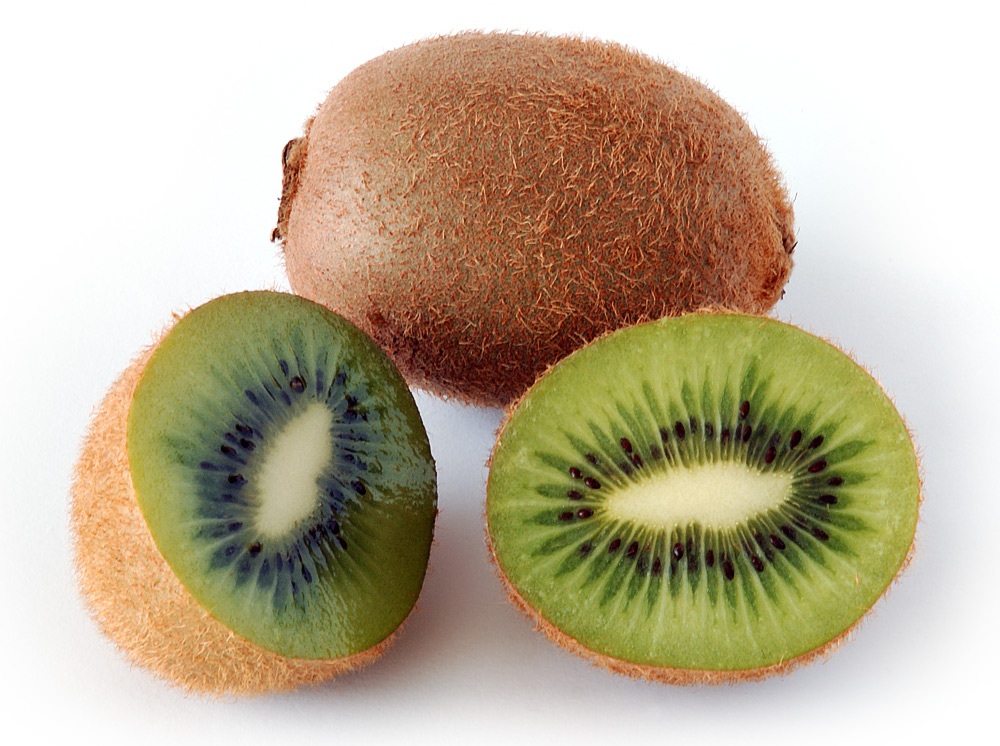2023-08-04T19:59
Kiwi - The Enigmatic Fruit from Down Under

The kiwi, scientifically known as Actinidia deliciosa, is a fascinating fruit native to New Zealand, aptly named after the country's iconic flightless bird. With its distinctive appearance, sweet-tart flavor, and plethora of health benefits, the kiwi has captured the attention of food enthusiasts worldwide. But beyond its enticing taste lies a rich history that dates back to ancient China, where it was first cultivated.<br><br>This small, oval-shaped fruit features a fuzzy brown exterior that conceals a vibrant green flesh dotted with tiny black seeds. Renowned for its high vitamin C content, a single kiwi provides more than the daily recommended dose, making it a nutritional powerhouse. Moreover, it contains vitamin K, vitamin E, potassium, and dietary fiber, making it a valuable addition to a balanced diet.<br><br>Kiwi cultivation spread from China to New Zealand in the early 20th century, where it thrived in the cool, temperate climate. The fruit's popularity soon soared, and it found its way to other regions like California, Italy, and Chile. Today, New Zealand remains one of the world's leading producers, followed closely by Italy.<br><br>The kiwi comes in different varieties, each offering unique tastes and textures. The most common is the green Hayward kiwi, but there are also golden kiwis with a sweeter flavor and smooth skin. Additionally, baby kiwis, or kiwi berries, have become increasingly popular due to their bite-sized convenience.<br><br>Beyond its culinary appeal, the kiwi plays a vital role in sustaining the ecosystem. The plant's dense foliage and fruit provide food and shelter for native birds and insects, contributing to the preservation of New Zealand's unique biodiversity. However, due to its susceptibility to diseases like Psa-V, careful management and biosecurity measures are essential to protect kiwi orchards and preserve their productivity.<br><br>In the realm of gastronomy, kiwi's versatility knows no bounds. Its tangy flavor and vibrant color make it an excellent addition to fruit salads, smoothies, and desserts. Moreover, its natural tenderizing enzymes have made it a popular ingredient in marinades for meat dishes. In the realm of desserts, kiwi finds itself atop pavlovas, tarts, and fruit trifles.<br><br>Aside from its culinary prowess, kiwi has also found its way into the beauty industry, where its extracts are incorporated into skincare products. These products often capitalize on the fruit's high vitamin C content, which is renowned for its antioxidant properties and potential to promote collagen production.<br><br>In recent years, kiwi has gained significant traction in the realm of sustainability. Its carbon footprint is relatively low compared to other fruits, given its resilience and ability to grow in a variety of regions. This characteristic, coupled with the fruit's numerous health benefits, has led to an increase in its consumption worldwide.<br><br>In conclusion, the kiwi is much more than a sweet and tangy treat; it is a fruit entwined with history, culture, and environmental significance. Its unique characteristics, diverse varieties, and extensive health benefits have positioned it as a staple in both culinary and beauty industries. As consumers continue to embrace sustainable choices, the kiwi's ecological advantages and flavorful allure are sure to keep it firmly rooted on our plates for years to come.<br><br>


